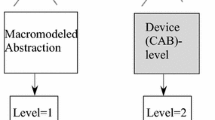Overview
- Authors:
-
-
Paul Tobin
-
School of Electronic and Communications Engineering Dublin Institute of Technology, Ireland
Access this book
Other ways to access
About this book
In PSpice for Analog Communications Engineering we simulate the difficult principles of analog modulation using the superb free simulation software Cadence Orcad PSpice V10.5. While use is made of analog behavioral model parts (ABM), we use actual circuitry in most of the simulation circuits. For example, we use the 4-quadrant multiplier IC AD633 as a modulator and import real speech as the modulating source and look at the trapezoidal method for measuring the modulation index. Modulation is the process of relocating signals to different parts of the radio frequency spectrum by modifying certain parameters of the carrier in accordance with the modulating/information signals. In amplitude modulation, the modulating source changes the carrier amplitude, but in frequency modulation it causes the carrier frequency to change (and in phase modulation it’s the carrier phase). The digital equivalent of these modulation techniques are examined in PSpice for Digital communications Engineering where we examine QAM, FSK, PSK and variants. We examine a range of oscillators and plot Nyquist diagrams showing themarginal stability of these systems. The superhetrodyne principle, the backbone of modern receivers is simulated using discrete components followed by simulating complete AM and FM receivers. In this exercise we examine the problems ofmatching individual stages and the use of double-tuned RF circuits to accommodate the large FM signal bandwidth.
Similar content being viewed by others
Table of contents (7 chapters)
-
Front Matter
Pages i-xiii
-
-
-
-
-
-
-
-
Back Matter
Pages 135-139
Authors and Affiliations
-
School of Electronic and Communications Engineering Dublin Institute of Technology, Ireland
Paul Tobin
About the author
Paul Tobin graduated from Kevin Street College of Technology (now the Dublin Institute of Technology) with honours in electronic engineering and went to work for the Irish National Telecommunications company. Here, he was involved in redesigning the analogue junction network replacing cables with PCM systems over optical fibres. He gave a paper on the design of this new digital junction network to the Institute of Engineers of Ireland in 1982 and was awarded a Smith testimonial for one of the best papers that year. Having taught part-time courses in telecommunications systems in Kevin Street, he was invited to apply for a full-time lecture post. He accepted and started lecturing full time in 1983. Over the last twenty years he has given courses in telecommunications, digital signal processing and circuit theory. He graduated with honours in 1998 having completed a taught MSc in various DSP topics and a project using the Wavelet Transform and neural networks to classify EEG (brain waves) associated with different mental tasks. He has been a ‘guest professor’ in the Institut Universitaire de Technologie (IUT), Bethune, France for the past four years giving courses in PSpice simulation topics. He wrote an unpublished book on PSpice but was persuaded by Joel Claypool (of Morgan and Claypool Publishers) at an engineering conference in Puerto Rico (July 2006), to break it into five PSpice books. One of the books introduces a novel way of teaching DSP using PSpice. There are over 500 worked examples in the five books covering a range of topics with sufficient theory and simulation results from basic circuit theory right up to advanced communication principles. Most of these worked example circuit have been thoroughly ‘student tested’ by Irish and International students and should mean little or no errors but alas. . . He married Marie and has four sons and his hobbies include playing modern jazz on double bass and piano but grew up playing G-banjo and guitar. His other hobby is flying and obtained a private pilots license (PPL) in the early 80’s.




